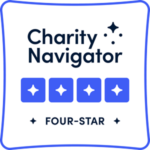Dance as a Language: A model program for integrating dance and social studies
Developed at The Earth School with funding from the U.S. Department of Education
Dance as a Language is a 17 week choreography residency for 3rd, 4th and 5th graders developed by AC teaching artists Kim Grier and Nami Kagami in partnership with the teachers and principal at the Earth School, on the Lower East Side of Manhattan, NYC.
- Students learn to use dance as a language and to choreograph stories based on themes from their Social Studies curriculum
- Students learn to observe dance closely, to describe, analyze and interpret what they see. They use these skills to offer each other useful feedback as they develop their choreography, and become increasingly independent in setting goals for their own rehearsals.
- As they learn to work and think as choreographers, students develop skills in collaboration and both creative and critical thinking. These skills are useful for dance, academic work, and life and deepen their understanding of Social Studies content and dance as a medium of communication.
See Videos of Program Strategies and Sequence below
Learning the Alphabet: Weeks 1-8
In the first weeks, class sessions have three components: each activity cultivates different skills and experiences of movement language that students will draw upon to choreograph.
The Warmup: Learning the Alphabet
[Video on the way]
The warmup introduces a wide variety of movement concepts. Students spend half the class building body knowledge, with opportunities to name, analyze and describe movement.
e.g. balance, rhythm, isolation, pattern, elements of dance, spatial awareness, force,
stretching, safe movement, shoulder blades, hamstrings, plie, releve, tendu, portebras …
Learning Choreography: Observation and Description in dance
Students study and practice a challenging piece of choreography they will adapt to create their own dances in later sessions.
The artists are training students to be specific in their movement choices, and to notice the many elements that come into play to create a movement phrase.
The students are building language skills of observation and description they will need to provide useful feedback to peers later in the residency.
Visualizing and Reflecting: Improvisation in Dance
In weekly improvisation work, students learn a structured artistic process through which they imagine, improvise, reflect and improvise again.
Improvisation gives the students the experience of creating and exploring new movement language freely and incorporating new ideas from their peers.
Week 8
Choreography Live in the Neighborhood; A Performance with A Dance Workshop for Boys
Before they start to choreograph, students visit Rod Rodgers Dance Studio, to see a professional company perform choreography “close enough to hear the dancer’s breathing”. Ms. Kim introduces the dances, and leads a question and answer session after each dance, and with the dancers.
Afterwards, students separate by gender to take workshops from the company dancers. The teachers and artists designed this workshop to give the boys the opportunity to to see and work with male dancers. The students learn a piece of the choreography they saw those dancers perform.
Performance Excerpts, including teacher Nami Kagami solo
Male dancers duet, opening with sequence boys will learn in the workshop
Boys Workshop excerpts
Weeks 9-17
Dancing the Language: Creating Choreography
Starting week 9, the class begins to choreograph. After the warmup, students gather on the stage for a brief discussion introducing new ideas and next steps. The rest of the class is spent working in their choreography groups, sharing their work with the class and receiving feedback from peers.
Dancing Social Studies
This video looks at how Maya’s class learned to choreograph movement stories from their yearlong study of global water scarcity.
Learning to choreograph
Student directed Rehearsal
“Students didn’t need adult direction to ready their pieces for performance after five weeks of a peer feedback rehearsal process”– 4/5th grade teacher
We meet a student choreography group, to see and hear about their work process. We see how they collaborated to develop a dance over five weeks, eventually setting their own rehearsal goals and working independently, fed by their collaboration and the peer feedback process.
Building collaboration through Peer Feedback
The video highlights how to structure a successful feedback session, by teaching students to give feedback that is strength-oriented and specific.
We see four boys very engaged with dance work, and how a range of learners in an ICT class participated in feedback.
Clarifying Stories
Dance outlines in the classroom
This video shows a classroom lesson taught by the literacy coach midway through the choreography process. The dancers asked students to clarify the story sequence in their dances; their classroom teachers or literacy coach worked with their own outlining formats.
We see how connections are made to classroom work on story, and how students and teachers recognize that dance is a different kind of storytelling.
The Show Must Go On: Rising to the Occasion
Courage and flexibility are required of student performers when only half of their classmates are present for the final performance, due to the legendary February 2014 snowstorm. The nature of performance and its unique learning opportunities are highlighted.
Reflection Sheets (2013)

